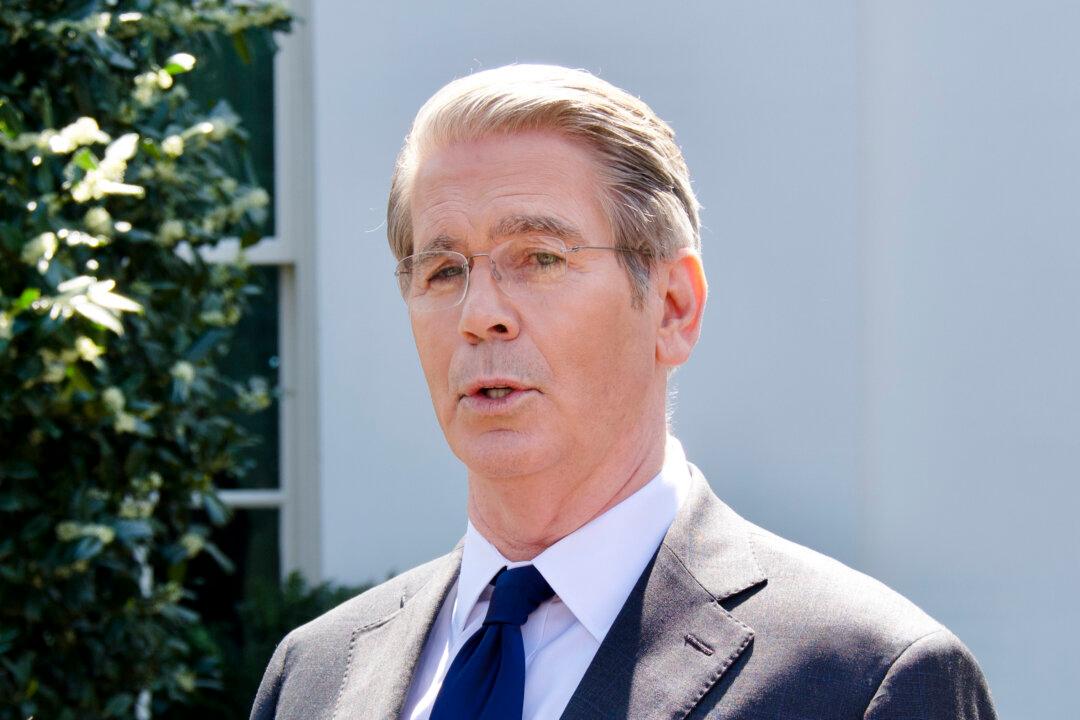The Federal Reserve raised the benchmark federal funds rate by 75 basis points on Nov. 2 to a target range of 3.75 to 4 percent, in line with market expectations.
The decision came after the Fed’s policy-making arm, the Federal Open Market Committee (FOMC), concluded its two-day meeting on Nov. 2.
It’s the sixth rate increase this year and the fourth consecutive 75-point increase in 2022. Interest rates are now the highest they have been since January 2008.
Officials hinted, however, at a possible slowdown in the pace of rate increases. Financial markets had initially rallied following the announcement, with the Dow Jones Industrial Average surging as much as 300 points.
During a post-meeting press conference, Fed Chair Jerome Powell reiterated on multiple occasions throughout his remarks that the time to slow the pace of rate hikes is coming.
“So that time is coming, and it may come as soon as the next meeting or the one after that. No decision has been made,” he said.
However, when Powell told reporters that talk of a pause in the central bank’s tightening efforts is “premature,” the leading benchmark indexes erased their gains and tanked.
“It’s very premature to be thinking about pausing,” Powell said, adding that there’s still some room for policy tightening. But he stopped short of saying where the policy rate should be next year.
When asked about more clarification, Powell said, “The question of when to moderate the pace of increases is now much less important than the question of how high to raise rates and how long to keep monetary policy restrictive.”
Powell also stated that the incoming data suggested that policymakers may raise interest rates to higher levels than expected at the September meeting.
Effect of Rate Hikes
According to the FOMC’s revised statement, the Fed noted that recent indicators are pointing to modest growth in spending and production, while job gains have been robust.As a result of elevated inflation risks, the rate-setting committee “anticipates that ongoing increases in the target range will be appropriate in order to attain a stance of monetary policy that is sufficiently restrictive to return inflation to 2 percent over time.” But it also signaled that the Fed could slow its tightening cycle.
For the first time, Fed officials recognized that the central bank’s rapid pace of rate hikes may eventually affect the economy with a “lag.”
“In determining the pace of future increases in the target range, the committee will take into account the cumulative tightening of monetary policy, the lags with which monetary policy affects economic activity and inflation, and economic and financial developments,” the FOMC said in the statement.
But officials added that policymakers could modify the FOMC’s stance on monetary policy when it is appropriate “if risks emerge that could impede the attainment of the committee’s goals.” The Fed reiterated that it will monitor inflation pressures and expectations, public health, financial developments, and labor market conditions.
The futures market is penciling in the terminal effective fund rates at around 4.97 percent in May.
“Two words, ‘cumulative’ and ‘lags,’ spark rally in stocks and bonds,” Bryce Doty, senior portfolio manager and vice president at Sit Investment Associates, said in a note. “The Fed gives investors hope that pace of rate increases are slowing by mentioning that they will be considering the cumulative impact of rate increases as well as take into account that there is a time delay between when rates are increased and when the economy begins to be significantly altered by those rate increases.”
Jobs Market Strong, but Card Debt More Costly
While the Fed is trying to cool the economy in order to contain high inflation, the U.S. labor market remains healthy. ADP reported (pdf) that private businesses created 239,000 new jobs in October, the most in three months. This was higher than the market estimate of 195,000. The annual pay growth held steady at 7.7 percent for job starters and eased slightly to 15.2 percent for job changers.“Goods producers, which are sensitive to interest rates, are pulling back, and job changers are commanding smaller pay gains. While we’re seeing early signs of Fed-driven demand destruction, it’s affecting only certain sectors of the labor market,” Nela Richardson, ADP chief economist, said in a statement.
Ed Yardeni, president of Yardeni Research, believes that once the Fed pauses interest rates at their restrictive levels, they “will be maintained for quite a while, even when inflation subsides.
“The FOMC wants to be certain that inflation has been subdued before lowering interest rates again.”





